Description
New York Times Bestseller! A stunning graphic memoir recounting actor/author/activist George Takei’s childhood imprisoned within American concentration camps during World War II. Experience the forces that shaped an American icon — and America itself — in this gripping tale of courage, country, loyalty, and love. George Takei has captured hearts and minds worldwide with his captivating stage presence and outspoken commitment to equal rights. But long before he braved new frontiers in Star Trek , he woke up as a four-year-old boy to find his own birth country at war with his father’s — and their entire family forced from their home into an uncertain future. In 1942, at the order of President Franklin D. Roosevelt, every person of Japanese descent on the west coast was rounded up and shipped to one of ten “relocation centers,” hundreds or thousands of miles from home, where they would be held for years under armed guard. They Called Us Enemy is Takei’s firsthand account of those years behind barbed wire, the joys and terrors of growing up under legalized racism, his mother’s hard choices, his father’s faith in democracy, and the way those experiences planted the seeds for his astonishing future. What does it mean to be American? Who gets to decide? When the world is against you, what can one person do? To answer these questions, George Takei joins co-writers Justin Eisinger & Steven Scott and artist Harmony Becker for the journey of a lifetime.








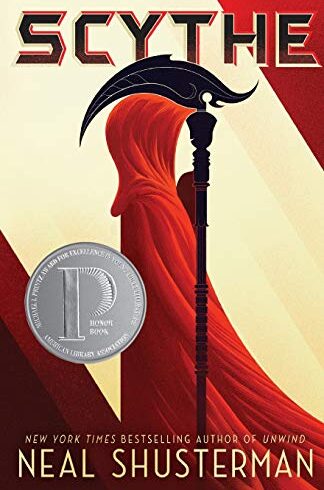
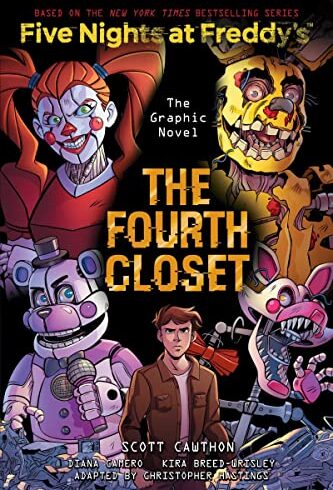




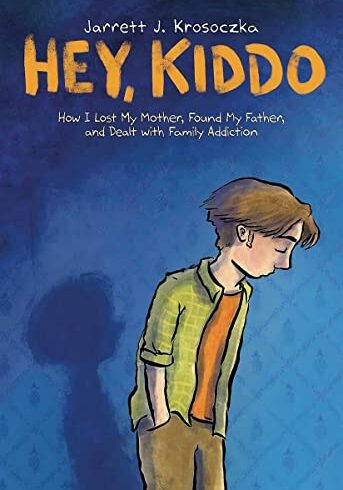
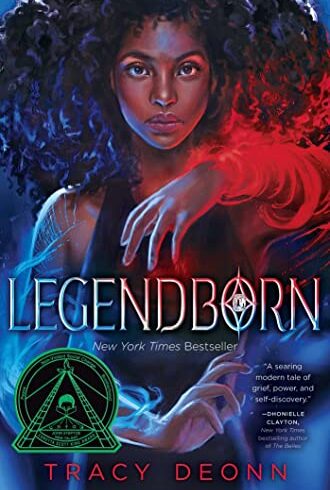
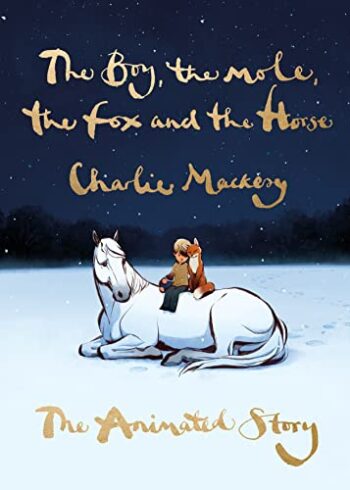
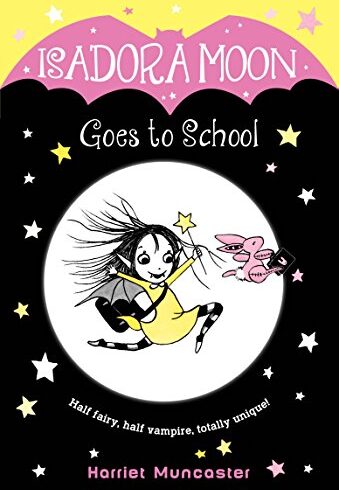

Garrison Haines-Temons –
In 1942, over 120,000 Japanese-Americans were taken away from their homes and placed into dingy prison camps all over the US. They did nothing wrong, but had none of the legal means to prove it to the racist authorities. They were paying for the sins of their home country after the Pearl Harbor bombing. Classic ignorant thinking at its worst: because a small minority of the group committed the crime, the entire group is guilty. George Takei spent most of his tender childhood living under this kind of oppression as he and his family were among the Japanese-American families locked up in internment camps. Reading about this shameful experience through his eyes makes everything that much more heartbreaking. His young mind couldn’t comprehend the ignorance of those in charge. He tried to make sense of the barbed wire enclosures, deplorable conditions, and abusive army guards. Fast forward into adulthood and George Takei does everything in his power as an equal rights activist and Hollywood actor to make sure this terrifying history doesn’t happen again., This graphic novel is nothing short of a brutally honest look into the politics of fear. Powerful politicians will use their influence and charisma to rile up their supporters into believing that the less fortunate are what’s wrong with this country. We saw it with the Japanese internment in George Takei’s book and we’re seeing it today with the Muslim ban, the family separation policy at the Mexican border, and black people getting harsher treatment from law enforcement than whites. The one thing we learn from history is that we learn nothing from history. But it doesn’t have to be this way. This book has the power to educate its readers. When you familiarize yourself with your fellow world citizens, you’re less likely to judge them. That’s what “They Called Us Enemy” means to me and that’s one of the reasons it’s getting a perfect five out of five stars. The more educated we are, the better off we’ll be. That means leaving behind comfortable bigotry and thinking about what it’s like to be the other guy, which is often a horrifying reality., But of course, there will always be those contrarians out there who say, “It wasn’t all that bad!” These same people say it about black slavery, they call Mexican border detention centers “Summer Camp”, and they’ll no doubt say it about Japanese internment camps. Having guaranteed living conditions doesn’t mean those conditions are necessarily good. Did I mention the barbed wire fencing around the camps? Did I mention the abusive treatment from the soldiers? What about the fact that George Takei’s family had to live in a horse stall that smelled like rancid feces? What about the infighting among Japanese prisoners who joined the military to prove their patriotism and the prisoners who stayed in the camps to protest? Had enough harsh reality? But wait, there’s one more juicy detail: institutionalization. Some prisoners were so familiar with the routine life of the camps that they couldn’t imagine getting back on their feet in a normal society. Now imagine a child as young as George Takei feeling that way upon leaving the camp. You get to see all of this through the author’s eyes whether you want to or not. It won’t be pleasant, but it’ll be a necessary kick in the butt for the apathetic and fearful., Despite the shortness and quick pacing of the book, you will feel as though you’ve taken an entire US history course in one sitting. Let this be a message to you all. Treat your neighbors with kindness and respect. Treat your inferiors with the same level of understanding and love. If you see an injustice happening, don’t stay quiet. Be the activist you were meant to become. Be a passionate enough voice in this battle for equality that those in power will have no choice but to listen. Let your words haunt them like schizophrenic ghosts. Will this change anything? Let me put it this way: we don’t have a choice but to activate our activism. The world can’t survive without making progressive leaps and bounds. That is the nature of time. Any questions?
Garrison Haines-Temons –
In 1942, over 120,000 Japanese-Americans were taken away from their homes and placed into dingy prison camps all over the US. They did nothing wrong, but had none of the legal means to prove it to the racist authorities. They were paying for the sins of their home country after the Pearl Harbor bombing. Classic ignorant thinking at its worst: because a small minority of the group committed the crime, the entire group is guilty. George Takei spent most of his tender childhood living under this kind of oppression as he and his family were among the Japanese-American families locked up in internment camps. Reading about this shameful experience through his eyes makes everything that much more heartbreaking. His young mind couldn’t comprehend the ignorance of those in charge. He tried to make sense of the barbed wire enclosures, deplorable conditions, and abusive army guards. Fast forward into adulthood and George Takei does everything in his power as an equal rights activist and Hollywood actor to make sure this terrifying history doesn’t happen again., This graphic novel is nothing short of a brutally honest look into the politics of fear. Powerful politicians will use their influence and charisma to rile up their supporters into believing that the less fortunate are what’s wrong with this country. We saw it with the Japanese internment in George Takei’s book and we’re seeing it today with the Muslim ban, the family separation policy at the Mexican border, and black people getting harsher treatment from law enforcement than whites. The one thing we learn from history is that we learn nothing from history. But it doesn’t have to be this way. This book has the power to educate its readers. When you familiarize yourself with your fellow world citizens, you’re less likely to judge them. That’s what “They Called Us Enemy” means to me and that’s one of the reasons it’s getting a perfect five out of five stars. The more educated we are, the better off we’ll be. That means leaving behind comfortable bigotry and thinking about what it’s like to be the other guy, which is often a horrifying reality., But of course, there will always be those contrarians out there who say, “It wasn’t all that bad!” These same people say it about black slavery, they call Mexican border detention centers “Summer Camp”, and they’ll no doubt say it about Japanese internment camps. Having guaranteed living conditions doesn’t mean those conditions are necessarily good. Did I mention the barbed wire fencing around the camps? Did I mention the abusive treatment from the soldiers? What about the fact that George Takei’s family had to live in a horse stall that smelled like rancid feces? What about the infighting among Japanese prisoners who joined the military to prove their patriotism and the prisoners who stayed in the camps to protest? Had enough harsh reality? But wait, there’s one more juicy detail: institutionalization. Some prisoners were so familiar with the routine life of the camps that they couldn’t imagine getting back on their feet in a normal society. Now imagine a child as young as George Takei feeling that way upon leaving the camp. You get to see all of this through the author’s eyes whether you want to or not. It won’t be pleasant, but it’ll be a necessary kick in the butt for the apathetic and fearful., Despite the shortness and quick pacing of the book, you will feel as though you’ve taken an entire US history course in one sitting. Let this be a message to you all. Treat your neighbors with kindness and respect. Treat your inferiors with the same level of understanding and love. If you see an injustice happening, don’t stay quiet. Be the activist you were meant to become. Be a passionate enough voice in this battle for equality that those in power will have no choice but to listen. Let your words haunt them like schizophrenic ghosts. Will this change anything? Let me put it this way: we don’t have a choice but to activate our activism. The world can’t survive without making progressive leaps and bounds. That is the nature of time. Any questions?
Garrison Haines-Temons –
In 1942, over 120,000 Japanese-Americans were taken away from their homes and placed into dingy prison camps all over the US. They did nothing wrong, but had none of the legal means to prove it to the racist authorities. They were paying for the sins of their home country after the Pearl Harbor bombing. Classic ignorant thinking at its worst: because a small minority of the group committed the crime, the entire group is guilty. George Takei spent most of his tender childhood living under this kind of oppression as he and his family were among the Japanese-American families locked up in internment camps. Reading about this shameful experience through his eyes makes everything that much more heartbreaking. His young mind couldn’t comprehend the ignorance of those in charge. He tried to make sense of the barbed wire enclosures, deplorable conditions, and abusive army guards. Fast forward into adulthood and George Takei does everything in his power as an equal rights activist and Hollywood actor to make sure this terrifying history doesn’t happen again., This graphic novel is nothing short of a brutally honest look into the politics of fear. Powerful politicians will use their influence and charisma to rile up their supporters into believing that the less fortunate are what’s wrong with this country. We saw it with the Japanese internment in George Takei’s book and we’re seeing it today with the Muslim ban, the family separation policy at the Mexican border, and black people getting harsher treatment from law enforcement than whites. The one thing we learn from history is that we learn nothing from history. But it doesn’t have to be this way. This book has the power to educate its readers. When you familiarize yourself with your fellow world citizens, you’re less likely to judge them. That’s what “They Called Us Enemy” means to me and that’s one of the reasons it’s getting a perfect five out of five stars. The more educated we are, the better off we’ll be. That means leaving behind comfortable bigotry and thinking about what it’s like to be the other guy, which is often a horrifying reality., But of course, there will always be those contrarians out there who say, “It wasn’t all that bad!” These same people say it about black slavery, they call Mexican border detention centers “Summer Camp”, and they’ll no doubt say it about Japanese internment camps. Having guaranteed living conditions doesn’t mean those conditions are necessarily good. Did I mention the barbed wire fencing around the camps? Did I mention the abusive treatment from the soldiers? What about the fact that George Takei’s family had to live in a horse stall that smelled like rancid feces? What about the infighting among Japanese prisoners who joined the military to prove their patriotism and the prisoners who stayed in the camps to protest? Had enough harsh reality? But wait, there’s one more juicy detail: institutionalization. Some prisoners were so familiar with the routine life of the camps that they couldn’t imagine getting back on their feet in a normal society. Now imagine a child as young as George Takei feeling that way upon leaving the camp. You get to see all of this through the author’s eyes whether you want to or not. It won’t be pleasant, but it’ll be a necessary kick in the butt for the apathetic and fearful., Despite the shortness and quick pacing of the book, you will feel as though you’ve taken an entire US history course in one sitting. Let this be a message to you all. Treat your neighbors with kindness and respect. Treat your inferiors with the same level of understanding and love. If you see an injustice happening, don’t stay quiet. Be the activist you were meant to become. Be a passionate enough voice in this battle for equality that those in power will have no choice but to listen. Let your words haunt them like schizophrenic ghosts. Will this change anything? Let me put it this way: we don’t have a choice but to activate our activism. The world can’t survive without making progressive leaps and bounds. That is the nature of time. Any questions?
Marilyn Tyler –
I seldom come upon a book that I think every American should read, but this one falls into that category. Over the years I have learned much about the Japanese internments during WWII, but hearing the story from someone who lived through those harrowing experiences gave me a fresh and frightening sense of that dark episode in our history. And because George Takei has been a familiar and beloved face to me since the early days of Star Trek, hearing that story from him gave it an even greater impact., So why the graphic format? I did wonder at first. But after finishing it, I realized that it was the perfect way to get the story across to readers of all ages. I devoured it, then passed it on to my son-in-law, whom I asked to pass it on to my grandkids. I think this book should be on required reading lists in every middle school in America. In a few hours any reader can learn that America–the “land of the free”–can become a place where so many are so fearful of others who look and sound different–the “enemy”–that our government can pass hateful laws easily accepted by the majority of our people. If the Japanese internments are unknown to our younger generations, might not the same thing happen again? This is essential history that must not be forgotten.
Marilyn Tyler –
I seldom come upon a book that I think every American should read, but this one falls into that category. Over the years I have learned much about the Japanese internments during WWII, but hearing the story from someone who lived through those harrowing experiences gave me a fresh and frightening sense of that dark episode in our history. And because George Takei has been a familiar and beloved face to me since the early days of Star Trek, hearing that story from him gave it an even greater impact., So why the graphic format? I did wonder at first. But after finishing it, I realized that it was the perfect way to get the story across to readers of all ages. I devoured it, then passed it on to my son-in-law, whom I asked to pass it on to my grandkids. I think this book should be on required reading lists in every middle school in America. In a few hours any reader can learn that America–the “land of the free”–can become a place where so many are so fearful of others who look and sound different–the “enemy”–that our government can pass hateful laws easily accepted by the majority of our people. If the Japanese internments are unknown to our younger generations, might not the same thing happen again? This is essential history that must not be forgotten.
Marilyn Tyler –
I seldom come upon a book that I think every American should read, but this one falls into that category. Over the years I have learned much about the Japanese internments during WWII, but hearing the story from someone who lived through those harrowing experiences gave me a fresh and frightening sense of that dark episode in our history. And because George Takei has been a familiar and beloved face to me since the early days of Star Trek, hearing that story from him gave it an even greater impact., So why the graphic format? I did wonder at first. But after finishing it, I realized that it was the perfect way to get the story across to readers of all ages. I devoured it, then passed it on to my son-in-law, whom I asked to pass it on to my grandkids. I think this book should be on required reading lists in every middle school in America. In a few hours any reader can learn that America–the “land of the free”–can become a place where so many are so fearful of others who look and sound different–the “enemy”–that our government can pass hateful laws easily accepted by the majority of our people. If the Japanese internments are unknown to our younger generations, might not the same thing happen again? This is essential history that must not be forgotten.
FHS –
I’d heard about the Japanese interment camps of long ago, but didn’t really know much other than they were an atrocity of the past. We didn’t study this during any of the US History classes I attended in school which is a shame. George Takei provides a heart wrenching dive into his own personal experience, mostly as seen through the eyes of his toddler self. The graphic illustrations bring to light, the unbearable hardships and prejudice that his parents along with thousands of other Japanese-Americans were forced to endure. It’s a quick read and very well done.
FHS –
I’d heard about the Japanese interment camps of long ago, but didn’t really know much other than they were an atrocity of the past. We didn’t study this during any of the US History classes I attended in school which is a shame. George Takei provides a heart wrenching dive into his own personal experience, mostly as seen through the eyes of his toddler self. The graphic illustrations bring to light, the unbearable hardships and prejudice that his parents along with thousands of other Japanese-Americans were forced to endure. It’s a quick read and very well done.
FHS –
I’d heard about the Japanese interment camps of long ago, but didn’t really know much other than they were an atrocity of the past. We didn’t study this during any of the US History classes I attended in school which is a shame. George Takei provides a heart wrenching dive into his own personal experience, mostly as seen through the eyes of his toddler self. The graphic illustrations bring to light, the unbearable hardships and prejudice that his parents along with thousands of other Japanese-Americans were forced to endure. It’s a quick read and very well done.